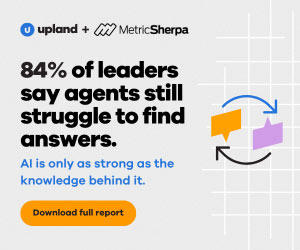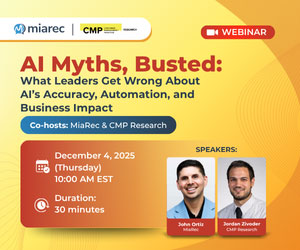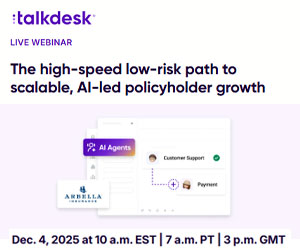Martin Hill-Wilson encourages us to develop a practical vision of the service experience and explains why technology refreshers are not going to make the difference.
I’m in the process of commenting on all the new stuff that is happening in customer engagement.
Having just written about messaging, I’ll do the same for progress in voice assistants, emerging themes in next generation contact strategies, up-skilling service people in an AI enabled service ecosystem. The list goes on.
Virtually all of it is driven by the latest wave of technology. As a result, vendors are at the front end of the educational process. White papers, webinars, workshops and POCs are the well trodden route to getting a foot in the door and expanding account value. I often participate in that extended workflow so I understand its impact.
This approach generally sits well with busy decision makers who yearn for an better work–life balance and find they can rationalise another POC as an example of being agile and keeping the pace going.
But there is a problem with all this which is similar to the challenge of trying to piece together a jigsaw puzzle.
From experience, we all know it is so much easier to fit the pieces together with an image of the end result at hand. That picture on the front of the box really helps! It offers ongoing clues about where things fit. It provides ongoing context to decipher the imagery on each piece. The worst are the ones with just blue sky! This is why buying complex puzzles in just a zippy bag from the local charity shop end up being much harder challenges when we have no view of the final outcome.
What might this tell us about our approach to building complex things like digital transformation and next generation customer service?
We work in fragments. One jigsaw piece at a time. That’s how we get to go home at night by turning big ideas into bite sized chunks. However, we are flying blind without the guidance of a complete picture that tells us what we are trying to build, how it is meant to work and where the moving parts are to be placed.
People might know the milestones of the digital transformation project plan, but can they tell you what the end result looks like and how it needs to work? Have they even imagined it?
Even assuming there is a master architect instructing the many to build the pyramid, it is not the way things actually get built today. Local and iterative activity matters as much as centralised and strategic work. How these different initiatives stay in step or are even aware of each other’s efforts is a major issue. And these are not solved by project team updates.
As functional ecosystems are brought together under the remit of digital transformation, knowing how to join them is not about API compatibility or the fact that there is new functionality in the technology refresh to play with. There has to be purpose.
Why are you doing it?
Cost reduction is insufficient beyond those who live and die for business case ROI. The answer to why build this is based on how well you understand your customers’ agenda in a world of generational preferences. This is not to be found in typical VoC findings. Again these are fragments of the fuller picture.
In this sense, each vendor is a fragment. Even when they are selling a complete ecosystem, it is still just part of what you are building and most importantly what you intend to create with it. Don’t allow their vision of the future to act as yours. The value and purpose of a new technology investment is never realised in terms of new features and ROI returns. It comes from piecing together your own vision of customer engagement – based on what concerns customers and your unique response.
Table stakes are making it consistent, low effort and as close to real time as possible. Being really valued and memorable only occurs when you have imagined a new service experience that is then pieced together from the fragments offered by the vendors.
In short, develop a practical vision of the service experience before saying yes to all those POCs. With that in hand, you then know what you are looking for, how to piece the bits together and what to really scrutinise to ensure it works.
This ‘picture on the box’ needs to be envisioned in three time zones. As is, short-term incremental and medium-term service transformation. By envisioned I mean drawn up large for stakeholders, vendors and colleagues to tap into for context and alignment. It’s a visual representation of how the moving parts slot together and deliver that unique service experience(s).
As complexity grows and outcomes need baking even faster, it works to invest time in being crystal clear what we are building as much as focusing on the detailed chore of joining the dots.
This is what I’ve noticed and been assisting with in my most recent client workshops. Hope that observation has been worth the read.
Author: Guest Author
Published On: 1st Aug 2018 - Last modified: 26th Feb 2019
Read more about - Archived Content





























